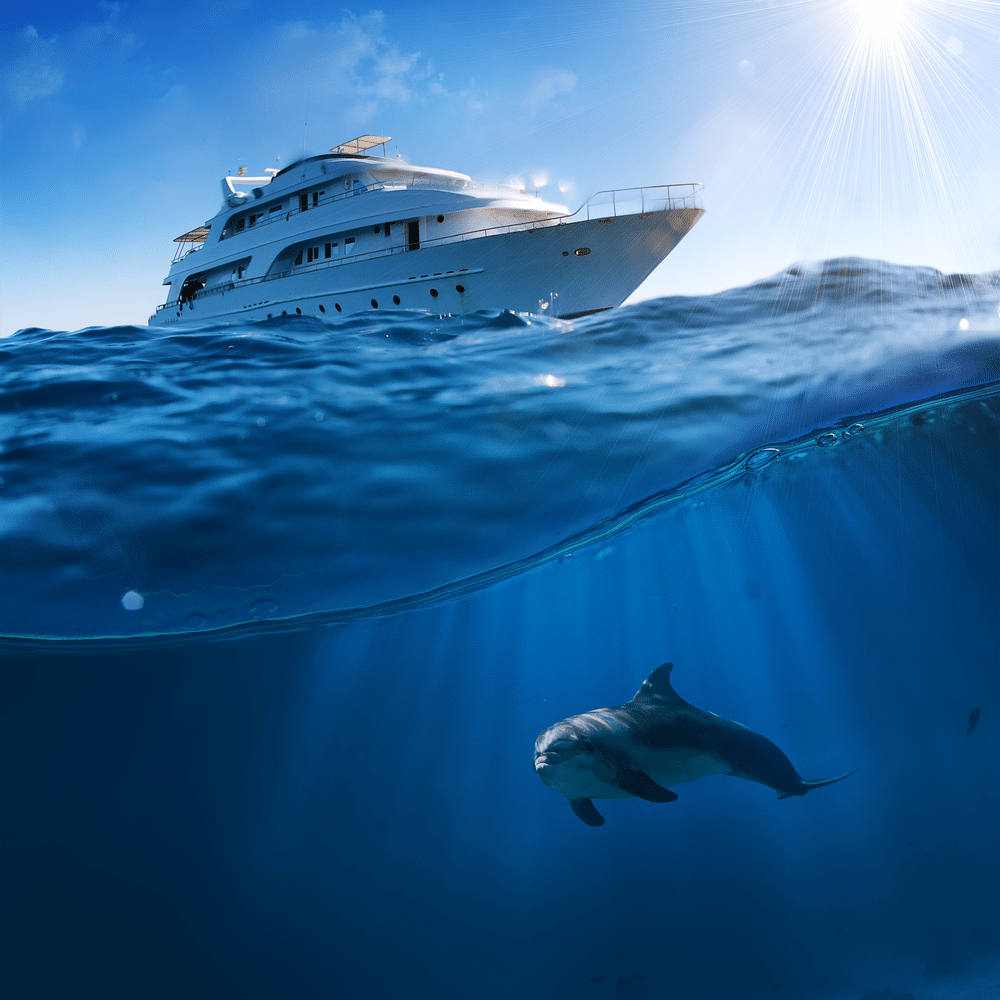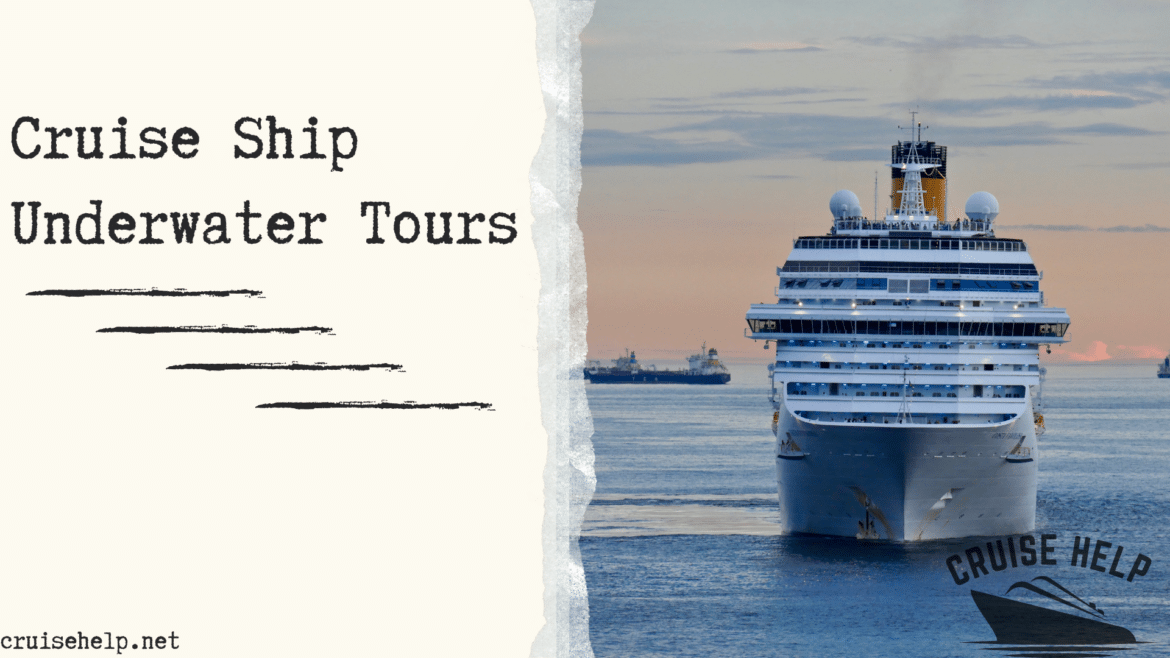Table of Contents
Imagine embarking on a journey that takes you beyond the surface of the ocean, into an awe-inspiring realm beneath the waves. The latest advancements in modern cruise ships now offer underwater experiences that allow guests to view the depths of the ocean through specially designed rooms and lounges. This concept of underwater cruise ship rooms gives passengers a unique view of the marine world. Exploring everything from vibrant reefs to mysterious ocean floors. However, the technology and engineering marvels that make these experiences possible are a blend of complex principles, from Archimedes’ principle to innovative hull design. 
The Secrets Behind Why a Cruise Ship Floats
Before we dive into the specifics of cruise ship underwater features. It’s essential to understand how these massive vessels stay afloat. A ship floats due to Archimedes’ principle, which states that the buoyant force acting on an object submerged in fluid is equal to the weight of the fluid displaced. In simple terms, the ship pushes down on the water with its weight, and the water pushes back with an equal force, enabling the vessel to stay afloat.
The hull of a cruise ship is carefully designed to maximize stability and buoyancy. The bottom of a cruise ship is typically shaped like a flat bottom but tapers off toward the edges. Helping the ship sit stably on the water. This is especially true for largest cruise ships, which require a vast amount of displaced water to support their weight.
How Much of a Cruise Ship is Underwater?
While cruise lines offer luxurious accommodations and breathtaking views from above the surface. A significant portion of the ship is actually submerged. Understanding how much of a cruise ship is underwater can give insight into the intricate balance between engineering and nature that allows these ships to float. Typically, about 30 feet to 50 feet of a modern cruise ship can be under the waterline, depending on its overall size and load. This part, known as the cruise ship hull, is designed to be streamlined and resilient to withstand water pressure and promote stability.
The bulbous bow, which protrudes at the front under a cruise ship, is another critical feature. It minimizes resistance, allowing the ship to move smoothly through the water while also reducing fuel consumption. Not only does the bulbous bow enhance efficiency, but it also improves the vessel’s stability, an essential feature for passenger comfort.
Features of the Bottom of a Cruise Ship

The bottom of the ship is more than just a structural component; it’s the foundation of buoyancy and stability. In most part of the ship below the waterline, you’ll find several features designed for safety and function, such as bilge keels. These are stabilizing fins located along the ship’s hull to reduce rolling from side to side. Ensuring a smoother journey for passengers.
On the bottom of a cruise ship, you’ll also find a network of ballast tanks, used to control the ship’s draft, or how much of the ship is submerged. By adjusting the amount of water in these tanks, engineers can raise or lower the water line to maintain balance.
Underwater Experiences on Royal Caribbean Cruises
Royal Caribbean and other leading cruise lines have pioneered innovations that bring passengers closer to the underwater world. Some largest cruise ships in their fleet now include viewing lounges or observatories beneath the surface. Where travelers can experience the sensation of being “underwater.” These underwater cruise ship rooms feature thick glass and special lighting. Allowing guests to gaze at the surrounding marine life from the safety and comfort of the ship. The view through these windows provides a surreal experience. As passengers observe fish, coral reefs, and other sea life moving gracefully along the bottom of a cruise ship. 
Engineering the Underwater Experience
Creating the underwater cruise experience requires advanced hull design and materials. Engineers must calculate how much pressure the bottom of a cruise ship can withstand while ensuring the ship floats effectively. Each part of the ship that sits underwater is reinforced, and the cruise ship hull is constructed from durable steel to handle the immense forces it faces. For a ship to safely accommodate these underwater rooms, designers must make adjustments to maintain balance and buoyancy.
Incorporating these features into the bottom of a cruise ship also demands a deep understanding of Archimedes’ principle and buoyant force. These rooms add weight to the lower part of the vessel. So engineers counterbalance this by modifying other parts of the ship to maintain the right water line.
Conclusion
In conclusion, cruise ship underwater experiences represent an incredible fusion of engineering marvel and adventurous luxury. Through innovations in hull design and the careful application of Archimedes’ principle. Modern cruise ships like those from Royal Caribbean offer guests a rare glimpse into the underwater world. These underwater cruise ship rooms not only redefine what’s possible in ocean travel but also bring people closer to the mysteries of the sea in a way that was once reserved for submarines and divers.
As more cruise lines explore underwater amenities, the future of cruising promises even more immersive experiences. Soon, guests may be able to witness everything from tropical reefs to deep-sea life. All from the comfort of their rooms below the water line. This balance of comfort and adventure is why the largest cruise ships continue to be engineering wonders, and why the bottom of a cruise ship is just as intriguing as the top. The journey beneath the surface offers not only relaxation and luxury but also a profound connection to the world below. Making it a true highlight for ocean explorers at heart.
